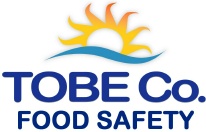The last time, we talked about proper cooling procedures, and that’s one of the most dangerous procedures in a restaurant if done incorrectly. It’s also one of the things in a restaurant that is most difficult to do correctly and consistently. Today let’s talk about something not quite so dangerous and very straightforward, the four approved ways of thawing food.

Thomas Frigge, Owner, Tobe Co. Food Safety
Most restaurants receive a high percentage of their product frozen so proper thawing is something that needs to be done constantly. When it’s done right, TCS food won’t sit in the danger zone (between 41° and 135°) making it unsafe to eat. Letting frozen food sit on a counter to thaw at room temp is NOT one of the approved ways! Sadly I see that more often than you would hope.
The first method is to thaw food in a refrigerator. This is a very good method since the food will never get above 41°, but it requires advanced planning. Thawing food in the refrigerator is slow with large pieces of food taking several days to thaw completely. Also, the thawing food takes up needed space in the cooler.
Next, is a quicker method – Thaw food submerged in cold running water. To do this, place food in a pan in a food prep sink (not a mop sink!). Turn cold water (70° or below) on in a small stream, and let the water hit the food and fill up the pan. It is important that the water is left running so that any bacteria coming off the food as it thaws goes down the drain with the water. What I often see is someone setting this system up then walking away for hours. Remember, this is a faster way to thaw, and the surface of the food is in the danger zone. I tell people that when this food is thawed enough to start working with, start working with it! It will thaw the rest of the way while being prepped. Under no circumstances in this procedure can the surface of the food be in the danger zone for more than 4 hours.
Thawing food in a microwave oven is acceptable, but you must cook the food immediately after thawing. This is because microwave thawing isn’t even and the food will have spots that are deep in the danger zone. The microwave is not intended to thaw large amounts of food and should only be used on a per order basis
The fourth way to thaw food is as part of the cooking process. This includes frozen patties of any kind put on the grill or chain broiler, and frozen jalapeno poppers, shrimp, chicken nuggets, fries, onion rings, etc. dropped into the fryer. I expect that this way accounts for more pounds of food thawing than all others combined. It is a very safe way (the safest?) to thaw since the food is in the danger zone for just a very short time as it thaws and cooks very quickly.
Thawing food is something most of us do every day, and it seems pretty straightforward. But to learn more detail about this and other Food Safety procedures, sign up for one of our ServSafe Manager Certification Classes. You can probably get it at half price! Call Tom at 235-0797, e-mail him at tfrigge@TOBECoFoodSafety.com, or go to TOBECoFoodSafety.com to register.




0 Comments